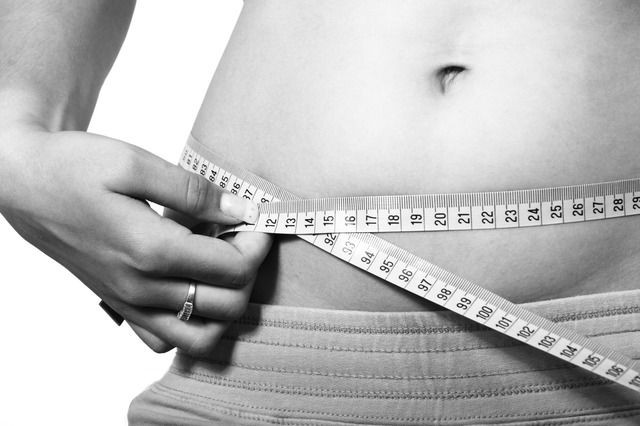The Blurry Line Between Disordered Eating And Eating Disorders: When Does One Become The Other?

People with rigid exercise and diet plans are often perceived as disciplined. At worst, they're considered health freaks. Unless there is something visibly jarring about their appearance, their healthy habits are rarely a cause for concern — but they should be. These behaviors, as well as overeating, may be hallmark signs of someone who suffers from disordered eating.
Dieting or an otherwise preoccupation with food and weight is nothing new. Some might say those who do it aspire others to live a healthier lifestyle. However, innocent attempts at eating healthfully can lead to disordered eating behaviors that don’t necessarily fall under anorexia or bulimia nervosa — two of the most common forms of eating disorders. Full-blown conditions are relatively easier to spot than more subtle forms of abnormal eating patterns. While eating disorders can arise from a variety of causes, dieting and even excessive exercising are usually precursors to this dangerous condition. So, when does this obsession with healthy eating become a major health concern?
A slippery slope
Disordered eating— a descriptive phrase, not a diagnosis — is marked by restrictive eating patterns, including restrained dieting, yo-yo dieting, diet pill use, skipping meals and the act of abstaining from major food groups such as fats or carbohydrates, according to the National Eating Disorders Collaboration. These habits may not be severe enough to be labeled an eating disorder, but it's still a slippery slope.
In a 2008 survey, SELF found that 60 percent of American women between the ages of 25 and 45 have had some unhealthy thoughts, feelings or behaviors related to food or their bodies. Psychology Today reports that up to 50 percent of the U.S. population have had some disordered relationship with food, body and exercise. Society’s diet mentality, or inclinication to bombard people with the next best fad diet and generally unsolicited weight loss advice, contributes to the rise of disordered eating and eating disorders, Elyse Resch, co-author of Intuitive Eating, told Medical Daily. In fact, she argues that dieting in and of it self is disordered eating.
“Anything that takes you away from your body’s signals of hunger and fullness is disordered eating,” Resch said. “Anything that’s externalized where you’re not listening to your body’s wisdom about when you’re hungry, what you really want to eat, how your body feels, your choice of food and when you’re full is disordered eating.” She even goes as far as to compare compulsive exercise to purging, saying people who frequently work out are “basically getting rid of calories,” which is similar to bulimia.
Shared, but different criteria
The American Psychiatric Association's (APA) Diagnostic and Statistical Manual of Mental Disorders, Fifth Edition (DSM-IV) diagnostic criteria for anorexia includes persistent restriction of food or energy intake leading to low body weight, intense fear of gaining weight, and denial of the seriousness of their low body weight. The criteria for bulimia include episodes of binge eating followed by self-induced vomiting at least once a week. People with abnormal eating behaviors who don’t fit either of these categories, or the recently identified binge eating disorder, are usually tossed into the "other specific feeding or eating disorders" (OSFEDS) category.
As stated earlier, this kind of behavior often starts off as a way to lose pounds or get in shape, but it can lead to rigid eating and exercise habits that jeopardize one’s health. The term disordered eating covers a wide range of abnormal eating behaviors that are shared with diagnosed eating conditions, but it does “not warrant a diagnosis of a specific eating disorder." This is primarily due to the lower severity and frequency level, according to the Academy of Nutrition and Dietetics (AND). That said, similar to the diagnostic criteria for anorexia and bulimia nervosa, disordered eating-patients must meet specific criteria in order to receive an official diagnosis. The line between restrictive or disordered eating and eating disorders is blurry, but it seems the only way to discern between the two is to determine whether or not someone’s symptoms align with the diagnostic criteria as defined by the APA, the AND said.
It’s all on a continuum, Resch said, but eating disorders take it to the extreme and have dangerous side effects, including death.
Seek help either way
Although it's not considered as severe as an eating disorder, disordered eating comes with several adverse health outcomes, including gastrointestinal disturbances, fluid imbalances, low heart rate and blood pressure, and increased anxiety and depression, according to the AND.
Some research suggests people are predisposed to unhealthy eating patterns, tracing anorexia and overeating back to the brain. This means brain stimulation could soon be a viable treatment option for at-risk people. But until researchers confirm their hypothesis, there are effective treatments in place for both conditions.
For people suffering from disordered eating, Resch suggests talk therapy, preferably "with someone who understands the dangers of dieting" and is against the diet mentality. And for those who find themselves over the line, the National Eating Disorders Association suggests psychotherapy or psychological counseling. So far, it's proven to be one of the most effective and long-lasting treatments for eating disorders.



























